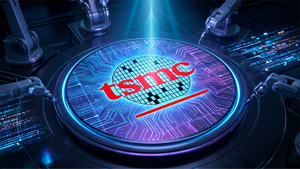– Lumasiran Demonstrated Evidence of Improvements in Exploratory Endpoints of Systemic Oxalosis, Including Echocardiographic Structure and Function, Nephrocalcinosis, and Kidney Stone Events –
– Expands Upon Previously Reported Reductions in Plasma Oxalate in PH1 Patients with Severe Renal Impairment –
Alnylam Pharmaceuticals, Inc. (Nasdaq: ALNY), the leading RNAi therapeutics company, today announced new positive results from the six-month primary analysis period of the ILLUMINATE-C Phase 3 open-label study of lumasiran, an RNAi therapeutic targeting hydroxyacid oxidase 1 (HAO1) – the gene encoding glycolate oxidase (GO) – that is being investigated for the treatment of patients of all ages with advanced primary hyperoxaluria type 1 (PH1). As previously reported, treatment with lumasiran resulted in substantial reductions in plasma oxalate (POx) at six months. Results from new exploratory analyses provide evidence that lumasiran treatment resulted in improvements in cardiac measures, nephrocalcinosis and kidney stone events. In addition, some patients treated with lumasiran experienced improvements in their most burdensome symptoms (as assessed by the investigator), including fatigue, nausea, and bone pain, with no patients reporting worsening of those symptoms. These data were presented at the European Renal Association-European Dialysis and Transplant Association (ERA-EDTA) International Congress being held both in Paris, France, and as a virtual event on May 19-22.
“Patients with compromised renal function due to advanced PH1 tend to have elevated levels of plasma oxalate, which can lead to systemic spread of oxalate to organs beyond the kidneys, including the heart,” said Professor Jaap Groothoff, M.D., Ph.D., Head of the Department of Pediatric Nephrology, Emma Children’s Hospital, Amsterdam UMC, University of Amsterdam, The Netherlands. “The ILLUMINATE-C study of lumasiran shows impressive plasma oxalate lowering in patients with severely impaired kidney function or who are on dialysis. These data, along with previous findings from ILLUMINATE-A and ILLUMINATE-B Phase 3 studies, provide evidence supporting the potential of lumasiran to benefit not only these patients, but those across the full spectrum of PH1 severity.”
“We are thrilled to be presenting preliminary data on clinical outcomes from our ILLUMINATE-C study. We believe the reductions in plasma oxalate seen with lumasiran in this study, along with this newly reported evidence of improvements in exploratory endpoints of cardiac measures, kidney stone events and nephrocalcinosis, are encouraging and signal the potential to establish lumasiran as a therapeutic option across the spectrum of PH1 disease severity,” said Pushkal Garg, M.D., Chief Medical Officer at Alnylam. “We look forward to further analyzing these endpoints over a longer period of time in the ongoing extension period of up to 54 months to continue to assess the impact of treatment with lumasiran on long-term clinical outcomes, including the manifestations of systemic oxalosis.”
Results
ILLUMINATE-C enrolled a total of 21 patients, including six who were not on dialysis at study start (Cohort A) and 15 who were on hemodialysis (Cohort B). As previously presented at the American Society of Nephrology (ASN) Kidney Week Meeting in 2021, in Cohorts A and B, respectively, treatment with lumasiran led to 33 percent and 42 percent mean reductions in POx from baseline to Month 6. Additionally, treatment with lumasiran led to 35 µmol/L (Cohort A) and 48 µmol/L (Cohort B) mean absolute reductions in POx from baseline to Month 6.
In new exploratory analyses, left ventricular ejection fraction (LVEF) and global longitudinal strain (GLS) were measured to assess the impact of lumasiran on the cardiac manifestations of systemic oxalosis. Among patients with abnormal LVEFi at baseline across Cohort A (N=1) and Cohort B (N=4), the patient in Cohort A and two of four patients in Cohort B experienced a ≥ 5 percent improvement following six months of treatment with lumasiran. Among patients with abnormal GLSii at baseline across Cohort A (N=1) and Cohort B (N=3), all four patients showed a ≥2 percent improvement at Month 6.
In patients with medullary nephrocalcinosis at baseline in Cohort A (N=5), two patients remained stable, three improved (two unilateral and one bilateral improvement) and none worsened following six months of treatment with lumasiran. In Cohort A, one patient did not have nephrocalcinosis at baseline and had bilateral worsening at six months. In patients with nephrocalcinosis at baseline in Cohort B (N=2), both improved (one unilateral and one bilateral improvement) following six months of treatment with lumasiran.
In Cohort A, the rate of kidney stone events per person-year decreased from 3.2 (95% CI: 2, 5.2) in the 12 months prior to consent to 1.5 (95% CI: 0.6, 3.9) during the first six months of treatment with lumasiran. As expected, given patients in Cohort B are on hemodialysis, the rate of kidney stone events was low: 0.07 (95% CI: 0.01, 0.71) in the 12 months prior to consent and 0.0 (95% CI: 0.0, 0.53) during the first six months of treatment with lumasiran. For patients in both cohorts, the most burdensome symptoms at baseline (as assessed by the investigator), including fatigue, nausea/decreased appetite, bone pain and decreased mobility, improved or remained stable following six months of treatment with lumasiran; none of the symptoms worsened.
The most common adverse event related to lumasiran was injection-site reaction (ISR) reported in 5 of 21 patients (24 percent). All ISRs were mild and transient, and the most common symptoms included erythema, discoloration, and hematoma.
A separate analysis presented at ERA-EDTA demonstrated that the recommended weight-based dosing regimens of lumasiran showed equivalent efficacy in patients of all ages and degrees of kidney function, including patients on hemodialysis.
To view all results presented by Alnylam at ERA-EDTA please visit www.alnylam.com/capella.
OXLUMO® (lumasiran) INDICATION AND IMPORTANT SAFETY INFORMATION
Indication
OXLUMO is indicated for the treatment of primary hyperoxaluria type 1 (PH1) to lower urinary oxalate levels in pediatric and adult patients.
Important Safety Information
Adverse Reactions
The most common adverse reaction that occurred in patients treated with OXLUMO was injection site reaction (38%). Symptoms included erythema, pain, pruritus, and swelling.
Pregnancy and Lactation
No data are available on the use of OXLUMO in pregnant women. No data are available on the presence of OXLUMO in human milk or its effects on breastfed infants or milk production. Consider the developmental and health benefits of breastfeeding along with the mother’s clinical need for OXLUMO and any potential adverse effects on the breastfed child from OXLUMO or the underlying maternal condition.
For additional information about OXLUMO, please see the full U.S. Prescribing Information.
About Lumasiran
Lumasiran is a subcutaneously administered RNAi therapeutic targeting hydroxyacid oxidase 1 (HAO1) in development for the treatment of advanced primary hyperoxaluria type 1 (PH1). HAO1 encodes glycolate oxidase (GO). Thus, by silencing HAO1 and depleting the GO enzyme, lumasiran inhibits production of oxalate – the metabolite that directly contributes to the pathophysiology of PH1. Lumasiran utilizes Alnylam's Enhanced Stabilization Chemistry (ESC)-GalNAc-conjugate technology, which enables subcutaneous dosing with increased potency and durability and a wide therapeutic index. Lumasiran has received regulatory approvals from the U.S. Food and Drug Administration (FDA) for the treatment of PH1 to lower urinary oxalate levels in pediatric and adult patients and from the European Medicines Agency (EMA) for the treatment of PH1 in all age groups under the brand name OXLUMO®.
About ILLUMINATE-C Phase 3 Study
ILLUMINATE-C (NCT04152200) is a single arm, open-label, multinational Phase 3 study evaluating the safety and efficacy of lumasiran in PH1 patients of all ages with severe renal impairment (eGFR ≤ 45 mL/min/1.73m2 or elevated serum creatinine for patients <12 months of age). The study is being conducted at 13 study sites across 10 countries around the world. Cohort A enrolled six patients with advanced PH1 who do not yet require dialysis, and Cohort B enrolled 15 patients who are hemodialysis-dependent. The dosing regimen is based on weight with three monthly starting doses followed by ongoing monthly or quarterly doses. The primary efficacy endpoint for Cohort A was the percent change in plasma oxalate from baseline to month six, and the primary endpoint for Cohort B was the percent change in pre-dialysis plasma oxalate from baseline to month six. Key secondary endpoints are designed to evaluate additional measures of plasma oxalate and changes in urinary oxalate. Kidney function, frequency and mode of dialysis, frequency of kidney stone events, and measures of systemic oxalosis, including clinical manifestations, will also be evaluated in the extension period of the study.
About Primary Hyperoxaluria Type 1 (PH1)
PH1 is an ultra-rare genetic disease that affects an estimated one to three individuals per million in the United States and Europe. PH1 is characterized by oxalate overproduction in the liver. The excess oxalate results in the deposition of calcium oxalate crystals in the kidneys and urinary tract and can lead to the formation of painful and recurrent kidney stones and nephrocalcinosis. Renal damage is caused by a combination of tubular toxicity from oxalate, calcium oxalate deposition in the kidneys, and urinary obstruction by calcium oxalate stones. PH1 is associated with a progressive decline in kidney function, which exacerbates the disease as the excess oxalate can no longer be effectively excreted, resulting in subsequent accumulation and deposition of oxalate in bones, eyes, skin, and heart, leading to severe illness and death.
About RNAi
RNAi (RNA interference) is a natural cellular process of gene silencing that represents one of the most promising and rapidly advancing frontiers in biology and drug development today. Its discovery has been heralded as “a major scientific breakthrough that happens once every decade or so,” and was recognized with the award of the 2006 Nobel Prize for Physiology or Medicine. By harnessing the natural biological process of RNAi occurring in our cells, a new class of medicines known as RNAi therapeutics is now a reality. Small interfering RNA (siRNA), the molecules that mediate RNAi and comprise Alnylam's RNAi therapeutic platform, function upstream of today’s medicines by potently silencing messenger RNA (mRNA) – the genetic precursors – that encode for disease-causing or disease pathway proteins, thus preventing them from being made. This is a revolutionary approach with the potential to transform the care of patients with genetic and other diseases.
About Alnylam Pharmaceuticals
Alnylam (Nasdaq: ALNY) has led the translation of RNA interference (RNAi) into a whole new class of innovative medicines with the potential to transform the lives of people afflicted with rare and prevalent diseases with unmet need. Based on Nobel Prize-winning science, RNAi therapeutics represent a powerful, clinically validated approach yielding transformative medicines. Since its founding 20 years ago, Alnylam has led the RNAi Revolution and continues to deliver on a bold vision to turn scientific possibility into reality. Alnylam’s commercial RNAi therapeutic products are ONPATTRO® (patisiran), GIVLAARI® (givosiran), OXLUMO® (lumasiran) and Leqvio® (inclisiran) being developed and commercialized by Alnylam’s partner, Novartis. Alnylam has a deep pipeline of investigational medicines, including five product candidates that are in late-stage development. Alnylam is executing on its “Alnylam P5x25” strategy to deliver transformative medicines in both rare and common diseases benefiting patients around the world through sustainable innovation and exceptional financial performance, resulting in a leading biotech profile. Alnylam is headquartered in Cambridge, MA. For more information about our people, science and pipeline, please visit www.alnylam.com and engage with us on Twitter at @Alnylam, on LinkedIn, or on Instagram.
Alnylam Forward Looking Statements
Various statements in this release concerning Alnylam's future expectations, plans and prospects, including, without limitation, Alnylam’s views with respect to the safety and efficacy of lumasiran as demonstrated by the six-month results of the ILLUMINATE-C Phase 3 study and the potential for lumasiran to substantially reduce plasma oxalate levels in patients of all ages with advanced PH1, including those on hemodialysis, the potential for changes in plasma oxalate following treatment with lumasiran to positively impact long-term clinical outcomes, including those related to manifestations of systemic oxalosis, Alnylam’s aspiration to become a leading biotech company and the planned achievement of its “Alnylam P5x25” strategy, constitute forward-looking statements for the purposes of the safe harbor provisions under The Private Securities Litigation Reform Act of 1995. Actual results and future plans may differ materially from those indicated by these forward-looking statements as a result of various important risks, uncertainties and other factors, including, without limitation: the direct or indirect impact of the COVID-19 global pandemic or any future pandemic on Alnylam’s business, results of operations and financial condition and the effectiveness or timeliness of Alnylam’s efforts to mitigate the impact of the pandemic; the potential impact of the recent leadership transition on Alnylam’s ability to attract and retain talent and to successfully execute on its “Alnylam P5x25” strategy; Alnylam's ability to discover and develop novel drug candidates and delivery approaches and successfully demonstrate the efficacy and safety of its product candidates; the pre-clinical and clinical results for its product candidates, including lumasiran; actions or advice of regulatory agencies and Alnylam’s ability to obtain and maintain regulatory approval for its product candidates, including lumasiran, as well as favorable pricing and reimbursement; successfully launching, marketing and selling its approved products globally; delays, interruptions or failures in the manufacture and supply of its product candidates or its marketed products; obtaining, maintaining and protecting intellectual property; Alnylam’s ability to successfully expand the indication for OXLUMO or for ONPATTRO (and vutrisiran, if approved) in the future; Alnylam's ability to manage its growth and operating expenses through disciplined investment in operations and its ability to achieve a self-sustainable financial profile in the future without the need for future equity financing; Alnylam’s ability to maintain strategic business collaborations; Alnylam's dependence on third parties for the development and commercialization of certain products, including Novartis, Sanofi, Regeneron and Vir; the outcome of litigation; the potential impact of current and the risk of future government investigations; and unexpected expenditures; as well as those risks more fully discussed in the “Risk Factors” filed with Alnylam's most recent Quarterly Report on Form 10-Q filed with the Securities and Exchange Commission (SEC) and in its other SEC filings. In addition, any forward-looking statements represent Alnylam's views only as of today and should not be relied upon as representing its views as of any subsequent date. Alnylam explicitly disclaims any obligation, except to the extent required by law, to update any forward-looking statements.
This release discusses the use of a previously approved RNAi therapeutic in continued development and is not intended to convey conclusions about efficacy or safety as to these uses. There is no guarantee that the data described in this release will result in expanded use of this commercial product, or will gain health authority approval.
____________________________
i Abnormal ventricular ejection fraction is defined as less than 55 percent
ii Abnormal global longitudinal strain is defined as less than 15 percent
View source version on businesswire.com: https://www.businesswire.com/news/home/20220524005288/en/
Contacts
Alnylam Pharmaceuticals, Inc.
Christine Regan Lindenboom
(Media)
+1-617-682-4340
Josh Brodsky
(Investors)
+1-617-551-8276




